2025 pitfall trapping in review
Arid Recovery
01 April 2025
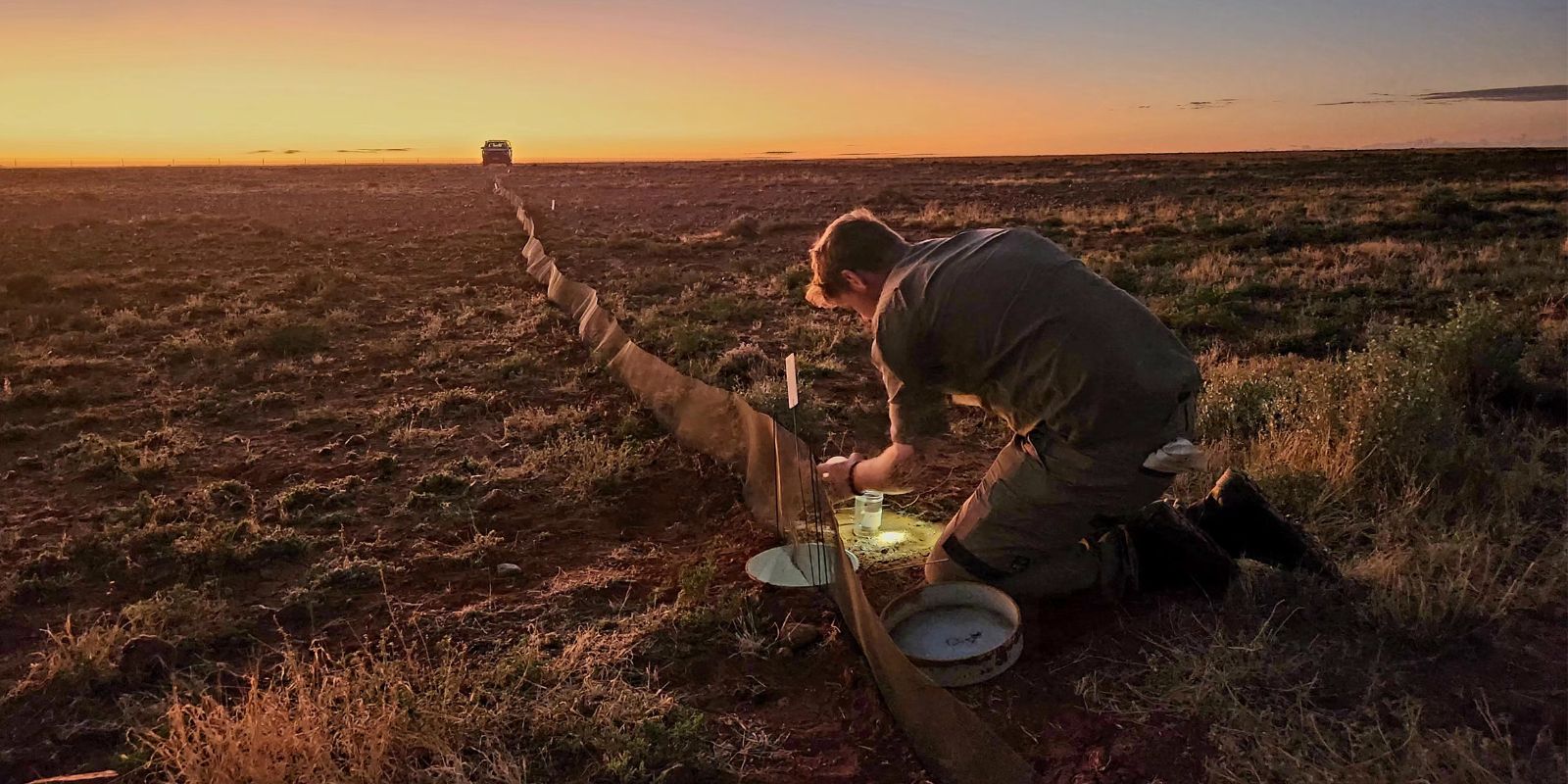
For 27 years, Arid Recovery’s annual pitfall trapping has helped track the environment. While our reintroduced animals often steal the show, it’s the small, lesser-known species that quietly tell the deeper story of ecosystem health.
Every year, we dust off the pelican picks and brave the outback heat for Arid Recovery’s annual pitfall trapping, and 2025 marked our 27th year of monitoring small mammals and reptiles inside and outside the Reserve. While we usually recap the highlights and tally up how many animals we caught (around 400 this year, for those keeping score), we thought we’d switch things up.
This time, we’re shining a spotlight on the lesser-known desert dwellers—the ones that live in the shadows of our reintroduced bilbies, bettongs, and quolls. These species tell us just as much about the health of our ecosystem and give us insight into how native wildlife are faring inside and outside the Reserve.
Here’s a closer look at a few of this year’s standout catches:
Gibber earless dragon (Tympanocryptis intima)
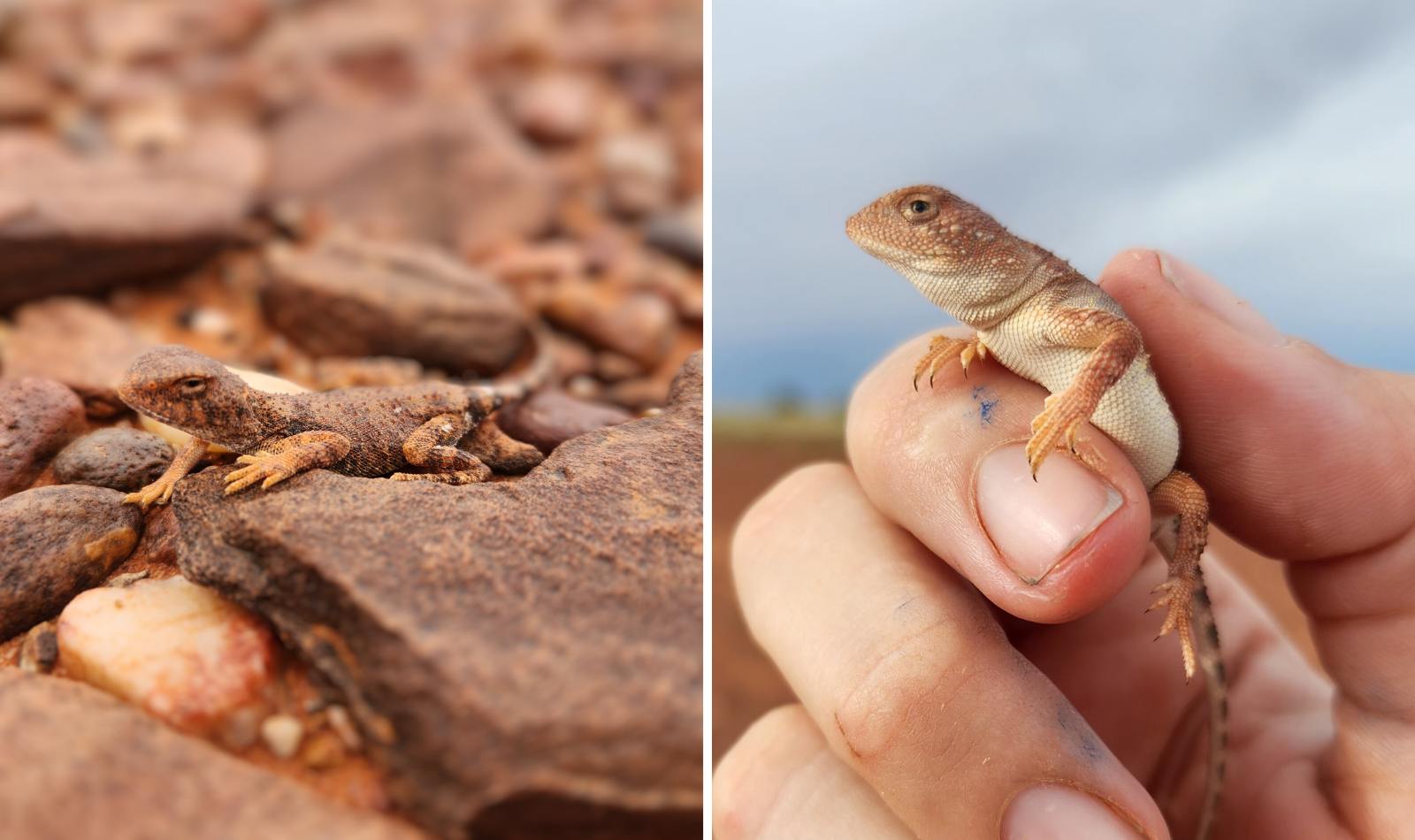 A gibber earless dragon pretending to be a rock (left), and one of our pitfall captures (right)
A gibber earless dragon pretending to be a rock (left), and one of our pitfall captures (right)
Master of disguise and the desert’s ultimate illusionist, the gibber earless dragon is a reptile that knows how to stay hidden. With a body that blends perfectly into the stony gibber plains, this little lizard doesn’t need burrows or cover. Instead, it presses its body flat against the ground and curls its tail, mimicking the shape and texture of a gibber stone. While other lizards and even earless dragon will run away to escape a predator, the gibber earless dragon will stand its ground.
In total, we recorded 108 gibber earless dragons inside the Reserve and 108 outside over the years, but this year, the balance tipped slightly in favour of outside with eight compared to seven inside the Reserve. Interestingly, a 2002 study by Arid Recovery co-founder John Read showed that T. intima populations increased slightly at cattle grazing sites compared to ungrazed areas. Our long-term results have found T. intima thriving both inside the Reserve and outside in grazed areas.
Desert mouse (Pseudomys desertor)
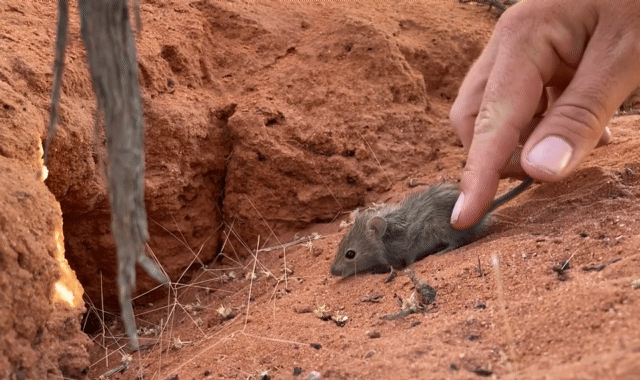 Releasing a desert mouse. Photo: K. Tuft
Releasing a desert mouse. Photo: K. Tuft
This year’s biggest surprise came in the form of the desert mouse, a species that has been scarce in recent years. Identified by its distinct orange-hued eye ring, P. desertor is a bit of a recluse. Only two individuals were caught in 2023, one in 2021, and just seven between 1999 and 2011. But this year, we were thrilled to find four individuals, suggesting that this elusive mouse may be making a cautious comeback. The desert mouse might be using the Reserve as a refuge from feral cats and foxes, taking advantage of the predator-free landscape to rebuild its numbers. Could this be the beginning of a desert mouse revival? Time (and more pitfall trapping) will tell.
Sandy inland mouse (Pseudomys hermannsburgensis)
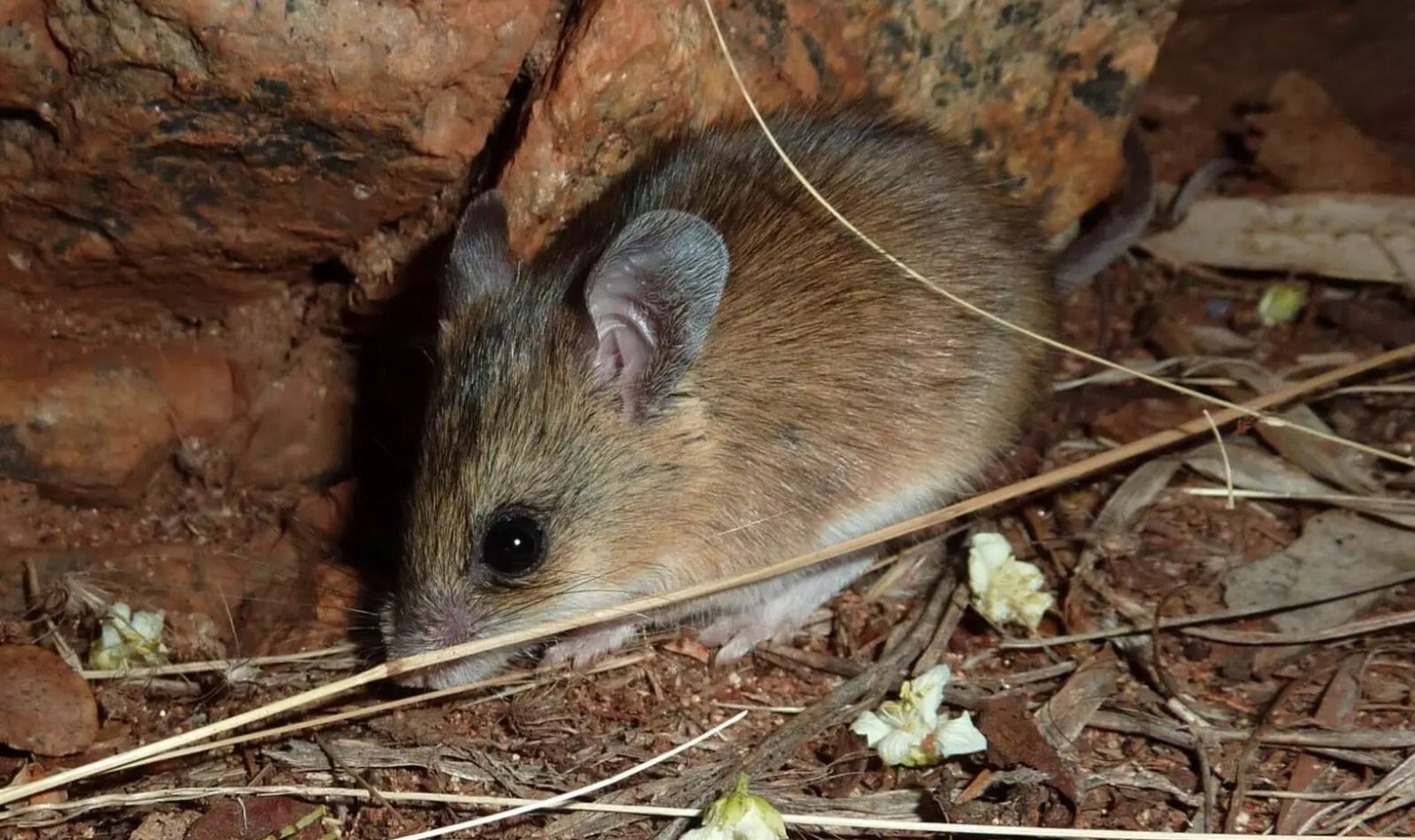 Sandy inland mouse not pictured here, expertly not photographed at Arid Recovery by someone who definitely remembered their camera. Photo: C. Watson
Sandy inland mouse not pictured here, expertly not photographed at Arid Recovery by someone who definitely remembered their camera. Photo: C. Watson
At first glance, the sandy inland mouse looks suspiciously like its invasive cousin, the house mouse. Same size, same diet, but here’s where they part ways: P. hermannsburgensis is a gregarious, communal species, preferring the company of its fellow mice over the solitary life of a house mouse. After years of low numbers, we’re seeing a steady increase in sandy inland mouse abundance. Between 2021 and 2024, only 21 individuals were recorded, and before that, just four. But this year’s trapping yielded ten individuals, hinting at a growing population that’s growing in and around the Reserve.
Grey-dwarf skink (Menetia greyii)
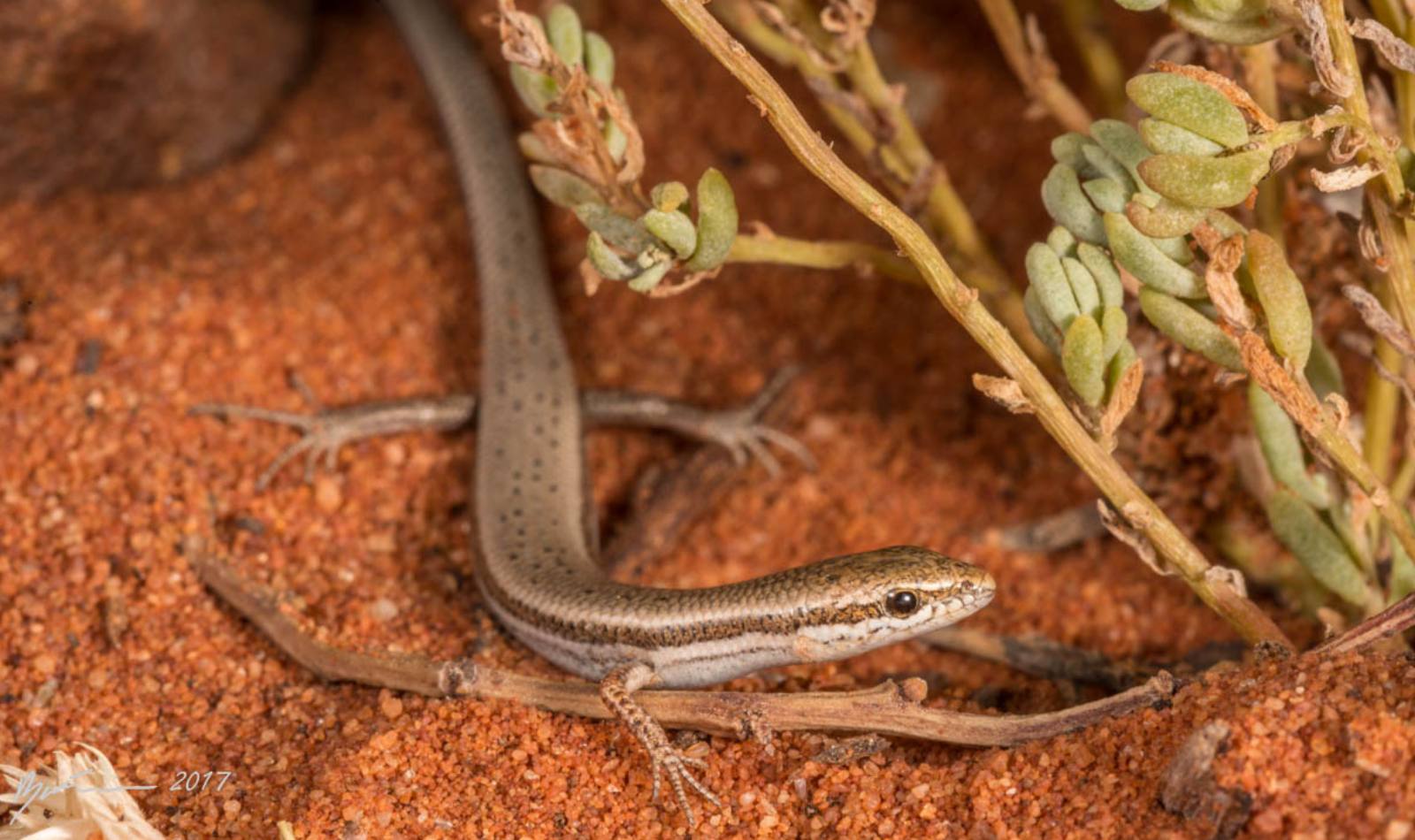 Does this Menetia greyii look familar? Photo: R. Francis
Does this Menetia greyii look familar? Photo: R. Francis
One of the most common catches during pitfalling is the grey-dwarf skink, and with good reason, Menetia greyii is one of Australia’s most widespread reptiles, with its range spanning 93% of the continent. If you’ve ever spotted a tiny skink darting across your backyard, chances are you’ve met one!
Breeding males are rare but can be identified by a yellow-orange flush on their belly and a pink tinge on the throat. However, M. greyii is one of the few vertebrates capable of parthenogenesis, reproducing without males. In fact, despite years of trapping, only two males have ever been recorded at Arid Recovery. Could it be that our Reserve is teeming with an all-female skink society?
Recovery is slow and steady
While it’s exciting to see signs of recovery for some species, ecosystem restoration is a marathon, not a sprint. Even in predator-free environments, small mammal populations fluctuate with rainfall, food availability, and competition.
For species like the desert mouse and sandy inland mouse, recovery can take decades. These desert ecosystems operate in booms and busts, meaning progress is often measured over generations. That’s why our 27 years of pitfalling are so important—long-term monitoring allows us to track these slow changes and adapt our conservation efforts.
These small, often-overlooked species provide valuable insights into the health of the Reserve. Their presence, or absence reflects how native wildlife is adapting to changing conditions. Every pitfalling season adds another chapter to the story of desert recovery, and we’ll be watching closely as that story unfolds.
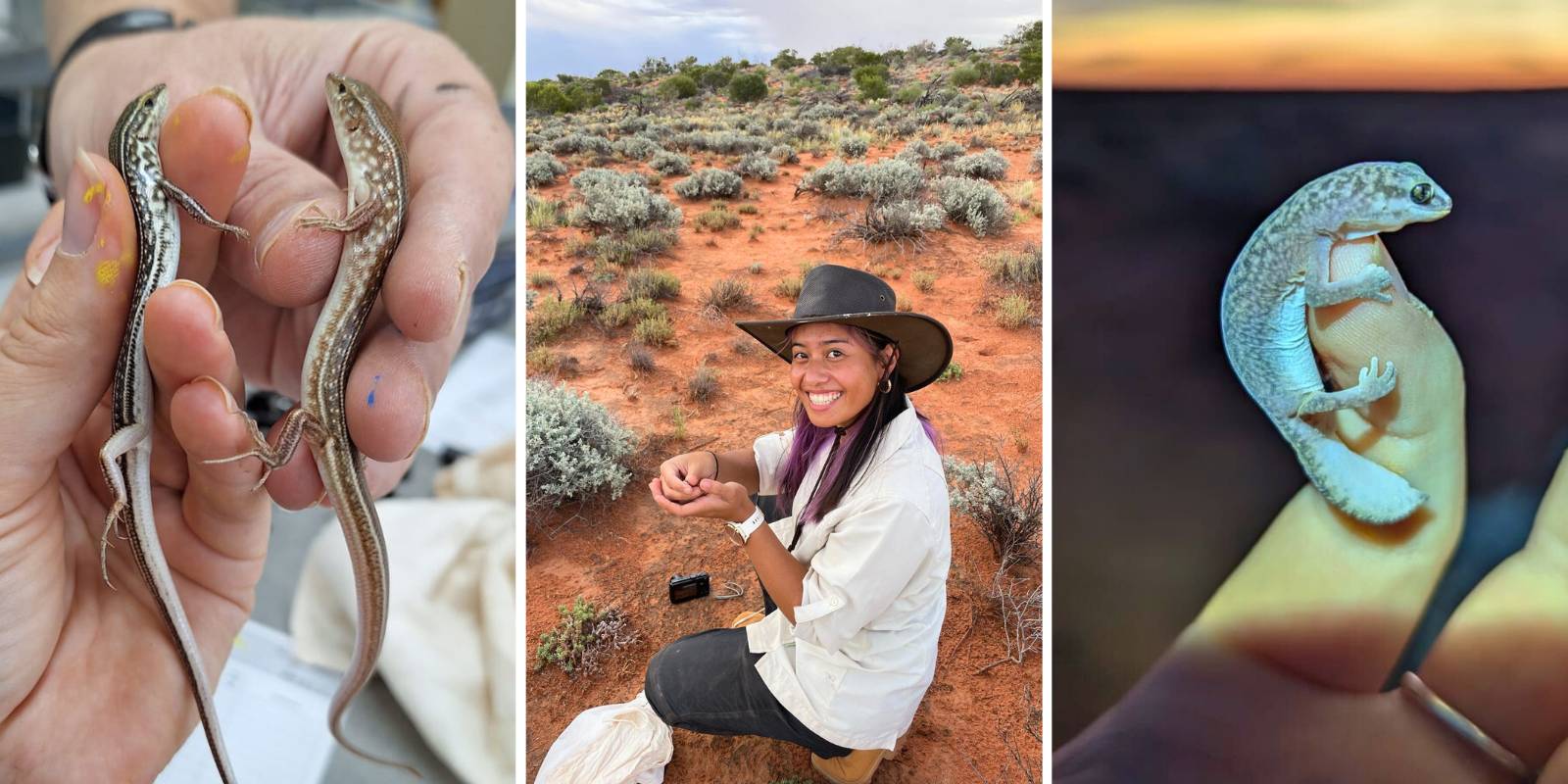.jpg?lang=en-AU)
Same, same but different, a Ctenotus regius and a Ctenotus leonhardii (left), Flinders University ecology undergrade Jess volunteered for the week (middle), and a fat-tailed gecko, Diplodactylus conspicillatus at golden hour (right).